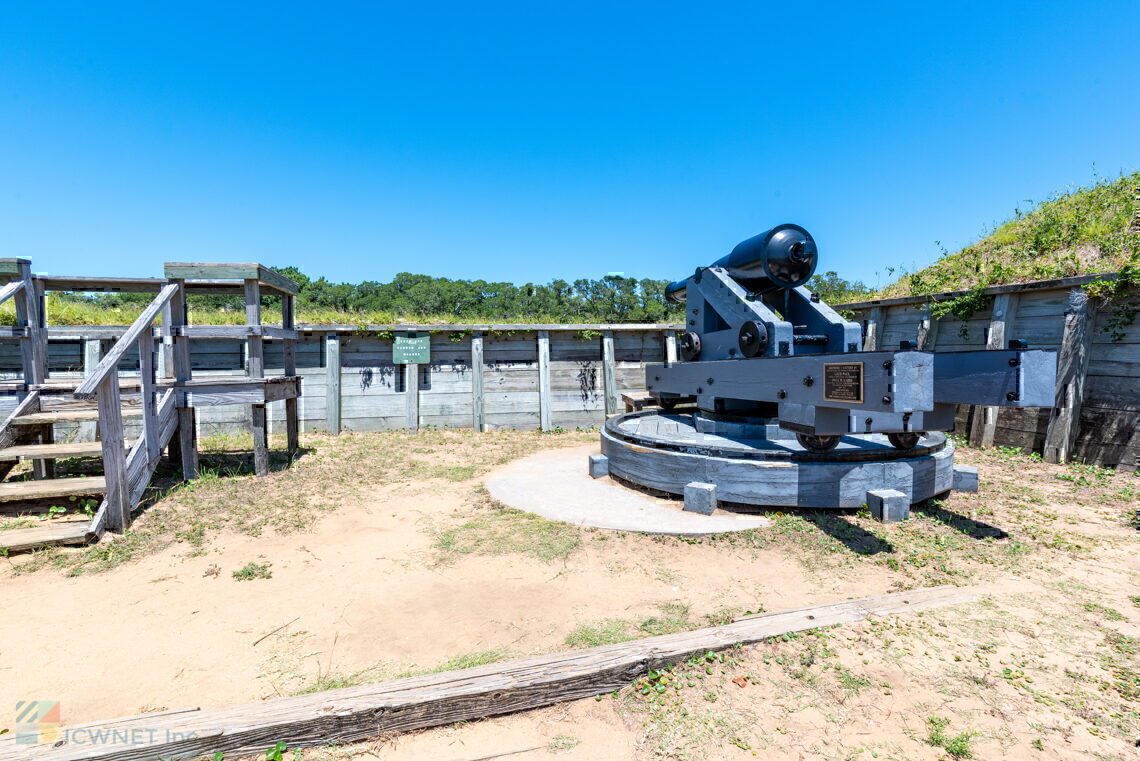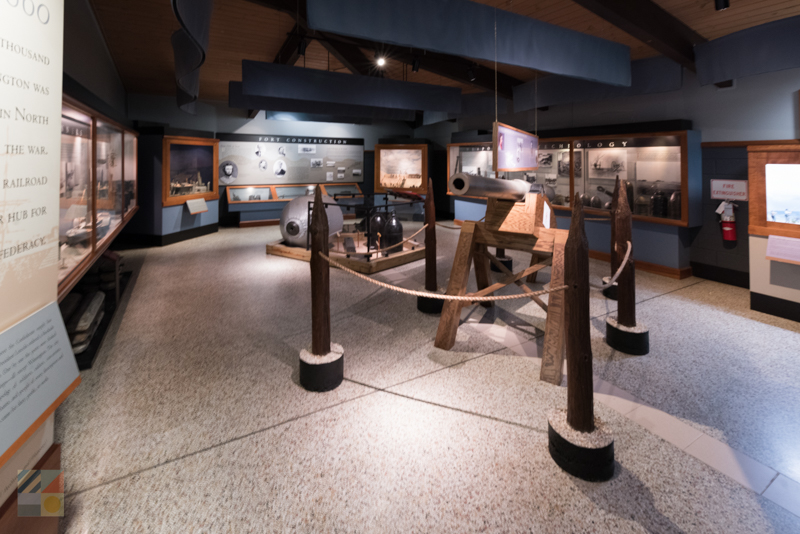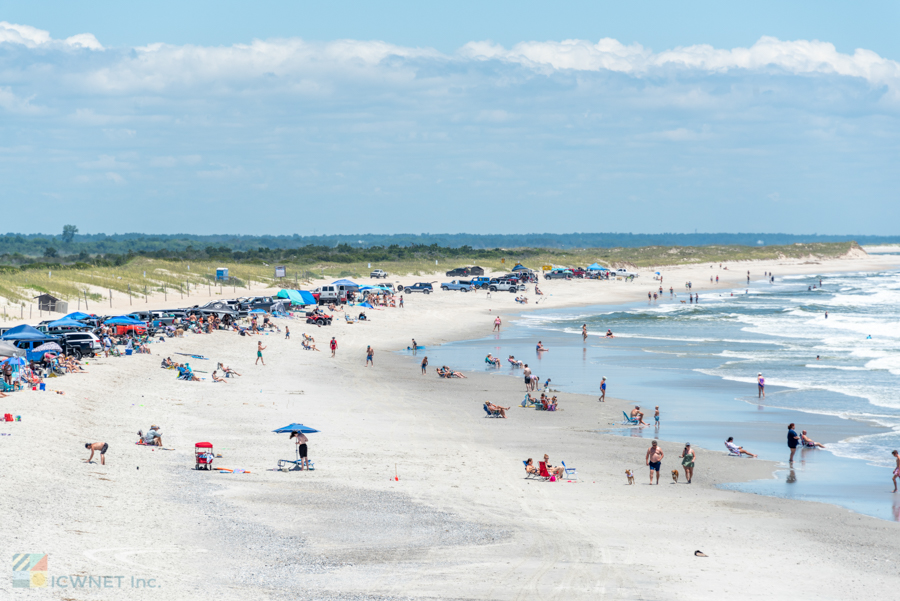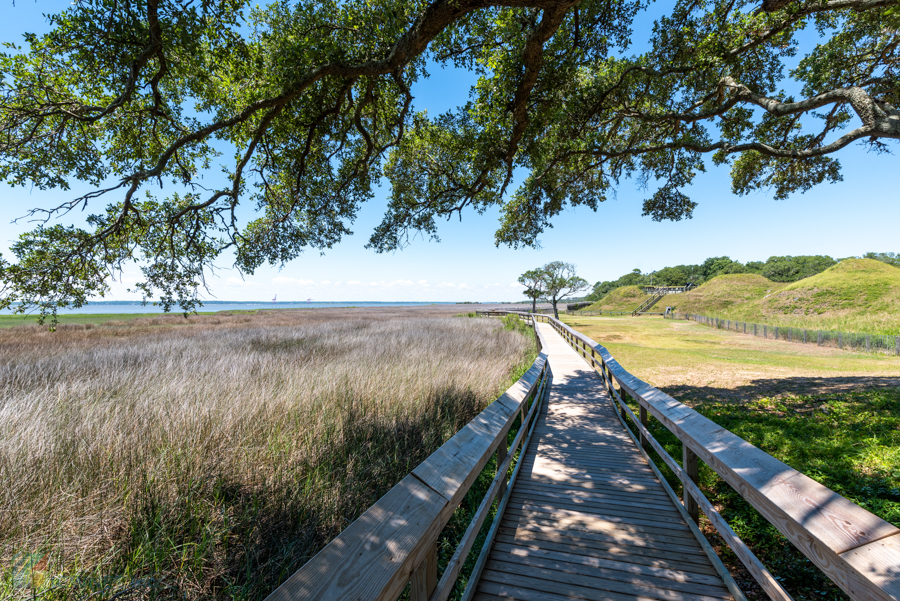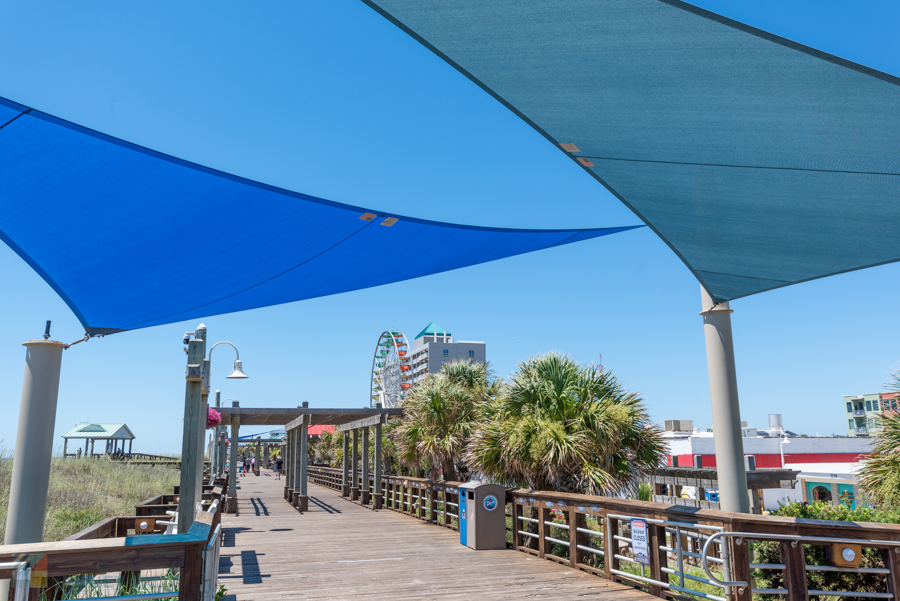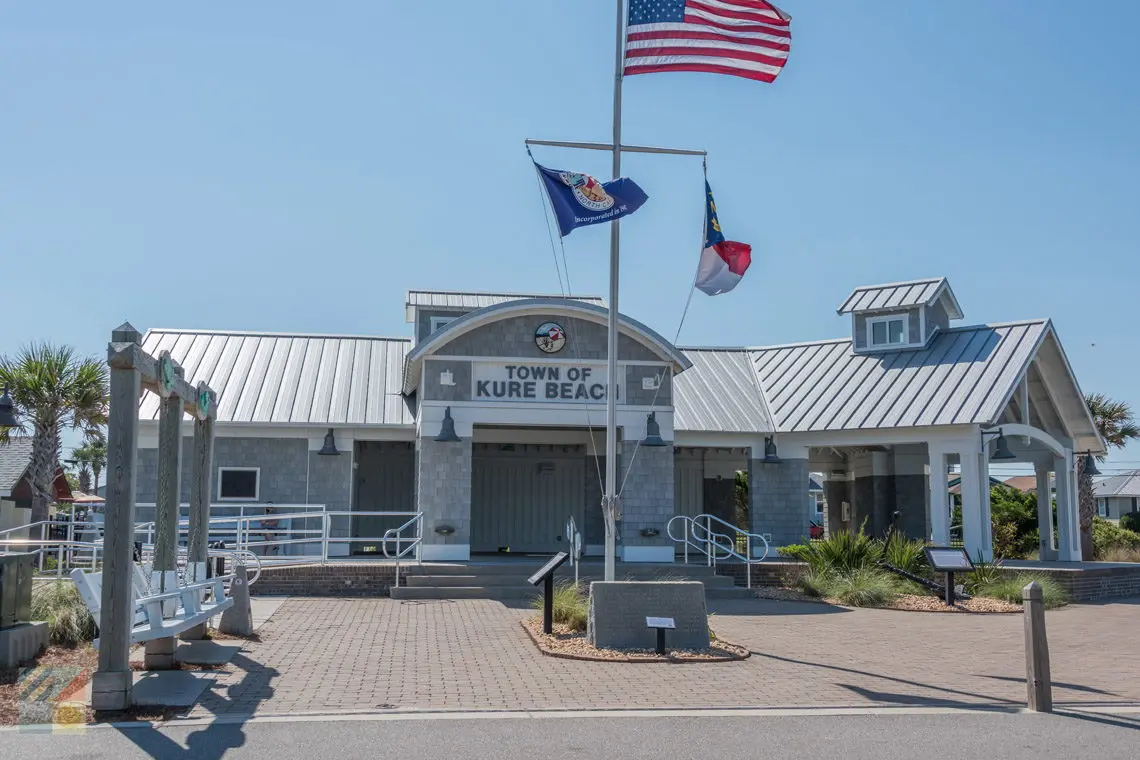Though Carolina Beach is a modern vacation destination, with a brilliant array of accommodations, resorts, and attractions, the town has deep roots that span the centuries and which include countless and fascinating stories.
From the original Tuscarora Indians to the early waves of vacationers, there’s more than meets the eye in this contemporary beach town. Discover a treasure trove of stories by uncovering the unique history of this iconic North Carolina Beach town.
A Brief History of Carolina Beach
Before English settlers arrived in the Cape Fear area in the 1700s, Carolina Beach – like many stretches of the southern NC coastline – was inhabited by small pockets of the Tuscarora Indians.
After the Native Americans were driven out of the area after the Tuscarora war (1711 – 1715), the area west of the Cape Fear River – modern day Wilmington – quickly grew into a busy port town while Carolina Beach remained relatively unchanged in the decades and centuries that followed. In the early 19th century, a lighthouse was built on the island, (which was originally known as Federal Point in the 1790s as a nod to the first US Constitution), to help guide mariners entering and exiting the growing port town of Wilmington, but otherwise, the local population remained small.
The population of Carolina Beach on the eve of the Civil War was just 72 people, who were mainly local farmers or riverboat captains, however the area would grow tremendously in significance as the Civil War raged on. The mouth of the Cape Fear River soon became an important root for blockade runners trying to deliver supplies to the desperate southern states, while the Confederate occupied Fort Fisher, which was located on the southern edge of the island, became an essential stronghold for the majority of the war. After the largest amphibious battle in the Civil War, Fort Fisher fell in 1865, which led to the immediate occupation of Wilmington and the eventual end of the war just a couple months later.
Once in Union hands, the Army Corp of Engineers built a jetty to make the inlet more passable for ships, (which still stands today), and combined with the notoriety of Fort Fisher, interest in the small island region began to grow. Once the beautiful shoreline was discovered, locals capitalized on this new interest, starting with Captain John Harper who began operating a ferry service to and from the beach in 1880. A fishing club was established just two years later in 1882, and small cottages began to pop up along the shoreline in the years that followed. A train was also constructed in 1886 to provide easier transportation to the beach, and as the slight suite of amenities grew, so did the interest in reaching and vacationing at Carolina Beach.
A hotel was erected in 1887, the Byran’s Oceanic Hotel, and by 1891, a billiard hall, a 10-pin bowling alley and a grocery store were added to the landscape as well. But despite this perpetual interest, it wasn’t until the early 20th century that Carolina Beach really started to boom.
In 1929 the grand Oceanview Hotel was constructed, and a wooden boardwalk soon followed which provided an easy route to and from the sand. In the 1940s, the popularity really exploded, as big bands headed to the local hotels and resorts and the crowds soon followed, eager for some fun in the sun. The iconic boardwalk remained a popular attraction, while cool oceanfront retreats like the Palais Royal Hotel provided visitors with hours of entertainment, courtesy of grand ball rooms, dining rooms, and dance floors.
A fishing pier was eventually constructed in 1946, and despite brushes with hurricanes (including the notorious 1954 Hurricane Hazel), iconic landmarks – like the pier – were rebuilt and opened for the now waves of summertime visitors. A steel swing bridge was erected to provide easier transportation, and the area resorts stayed hopping with all varieties of visitors.
Despite its glowing reputation, Carolina Beach did have some speedbumps along its journey to become the modern vacation town that it is today. During the Jim Crow era, segregation was a way of life on the island, and the area was effectively split into two communities – Carolina Beach for the white visitors, and Seabreeze to the north for African American visitors. In order to access Seabreeze or Bop City, (which is present-day Freeman Park), African American men traveling through Carolina Beach en route had to wear shirts over their swimsuits, and could not access the ocean in Carolina Beach except on Monday’s, even though it was a shell’s throw away from Seabreeze.
Though separated by just ½ mile, the two communities were different worlds, and Seabreeze quickly became famed for its 31 juke joints where the biggest African American entertainers of the day came to wow the crowds. Seabreeze eventually disappeared due to drastic loss from Hurricane Hazel as well as the rise of desegregation, but the popular Freeman Park stands as a nod to this chapter in local history.
With its reputation continually growing, as well as local development, a new concrete bridge was built in the 1960s to replace the old wooden original bridge, and the visitors continued to pour in at higher and higher numbers. Despite a brief downturn in the 70s and early 80s, the town stayed strong as a vacation destination, and really blossomed in the 1990s with the arrival of a tidal wave of new businesses, attractions, and the revitalization of the boardwalk. Today, the area parks, attractions, and resorts remain as enticing as ever, and Carolina Beach continues its longstanding reputation as the place to go for great beaches, great fishing, and ample opportunities to dance the night away.
Historic Spots in and around Carolina Beach
There are a number of historic sites in and around Carolina Beach – a not altogether surprising fact considering that the town has been a hopping vacation spot for well over a century.
Enjoy a taste of history on your next vacation by uncovering these sites that were vital to the community’s original landscape.
Freeman Park
Once the home of only one of two beaches that were open to African Americans in the Cape Fear area during the Jim Crow era, today Freeman Park is a popular, undeveloped park that welcomes rustic campers and 4WD vehicles. The undeveloped shoreline was converted into a public park in 2004 and continues to be one of the most popular beaches for modern visitors.
Fort Fisher
Located south of Carolina Beach, the Fort Fisher State Historic Site / Recreation Area was originally the site of one of the most important Confederate forts during the Civil War. Modern visitors can still see remnants of the fort via earthen work remains, historical markers, and artifacts at the on-site Visitors’ Center.
Carolina Beach Boardwalk
Completely renovated and rebuilt in the 1990s – early 2000s, the Carolina Beach Boardwalk was originally constructed in 1887 and was one of the first attractions for Carolina Beach vacationers. Today, it has a claim to fame as one of the only Beach Boardwalks on the North Carolina coastline.
McCabe-Lancaster House
This pretty and modern looking beach house along Carolina Beach Avenue was constructed in 1935 and has been updated and renovated via its subsequent seven owners. It’s one of the few homes of the era to survive Hurricane Hazel in the 1950s.
Sly-Walton House
Built in 1938, and home to a family who rented out the upstairs rooms to young servicemen and their wives during World War II, this simple Dutch Colonial style home is one of the oldest private residences along Cape Fear Blvd.
Ocean Plaza Building
Distinguished for its Are Moderne style and central locale in the business district of Carolina Beach, the 1946 Ocean Plaza was an original hot spot for early vacationers, and was an entertainment center for residents and visitors that hosted a wide range of big bands and rock stars, including Bill Grassin, Bo Diddly, Chubby Checker and many more famed talents.
Loughlin House
This small beach bungalow along Lake Park Blvd. is locally famed as one of the oldest homes in Carolina Beach, having been built in 1916 by A. W. Pate, the then-president of the New Hanover Transit Company
Burnett Cottage
This pretty coastal home on Carolina Beach Ave was built in 1936 and subsequently rebuilt in 1955 after being devastated by Hurricane Hazel.
Joy Lee Apartments
Constructed in the 1940s, the Joy Lee Apartments are a unique and distinctive blend of architectural styles which includes Mission Style, Art Deco, Art Moderne, and Prairie Style. The modernized flats continue to be popular with modern day vacationers, as they have been for generations.
Carolina Beach Community Church
Located on the corner of Cape Fear Blvd., the Carolina Beach Community Church was built to accommodate varying denominations in 1940, and was eventually formally organized as a Baptist Church in 1942. The church is one of the first places of worship in the area, and is often referred to as the “Mother Church” of Carolina Beach.
Immaculate Conception Chapel
Built in 1939 and subtly situated along St. Joseph Street, the Immaculate Conception Chapel is locally famed and is a small home that served as a rectory and four-room dwelling until it was converted to a private residence.
Lewis – Lyerly House
This small pink residence along South 4th Street was built in 1945 and, like many residences of the era, is one of the few structures to remain from the pre-Hurricane Hazel era.
Carolina Beach Drug Store
A popular soda fountain, pharmacy, snack bar, and grocery store when it was built in 2004, the two-story and stucco Carolina Beach Drug Store on Harper Drive was a hopping spot for residents and visitors alike to conduct business and meet and great with their neighbors.
Tips and Tricks for Uncovering Carolina Beach History
- For a wealth of info on the area – from its early Native American roots to its hidden historical gems – contact the non-profit Federal Point Historic Preservation Society. This local society has a wealth of resources, information, and special events that highlight the rich culture of Carolina Beach. https://federal-point-history.org/
- Enjoy an inside look into the local beach towns with a visit to the Wrightsville Beach Museum of History. Located just north of Carolina Beach, this museum that’s located within a historic beach cottage has decades of tales of the early life of the area’s beach vacationers.
- Love History? Make sure a trip to Wilmington is on your agenda. Home to countless museums, historic homes, landmarks, and one of the largest downtown Historic Districts in the country, Wilmington is a must-see destination for any history buff.
- There’s lots to discover in Carolina Beach’s Great Outdoors as well! From the original jetty that still hugs the borders of Fort Fisher, to the collection of shipwrecks located miles offshore that are popular with charter fishermen, the beaches and waters of Carolina Beach can be as fascinating as the inland attractions.
From iconic Civil War battle sites to unique residences that have been popular vacation homes for decades, Carolina Beach has a surprisingly layered history that includes more than a century of visitors. Discover all the hidden stories that this town has to offer, and make a date to uncover the roots that led to Pleasure Island’s modern reputation as one of the coolest beach towns on the Carolina Coast.

